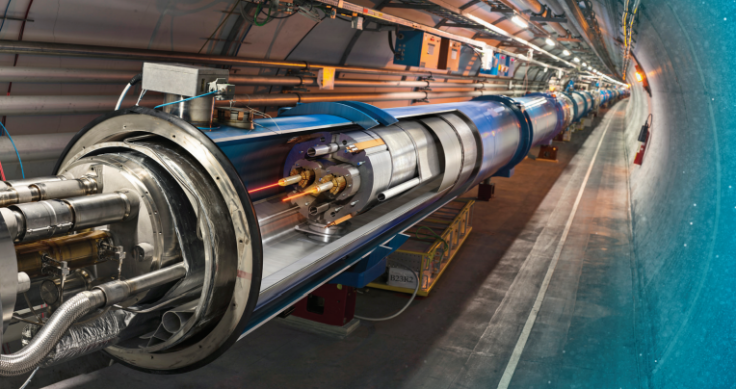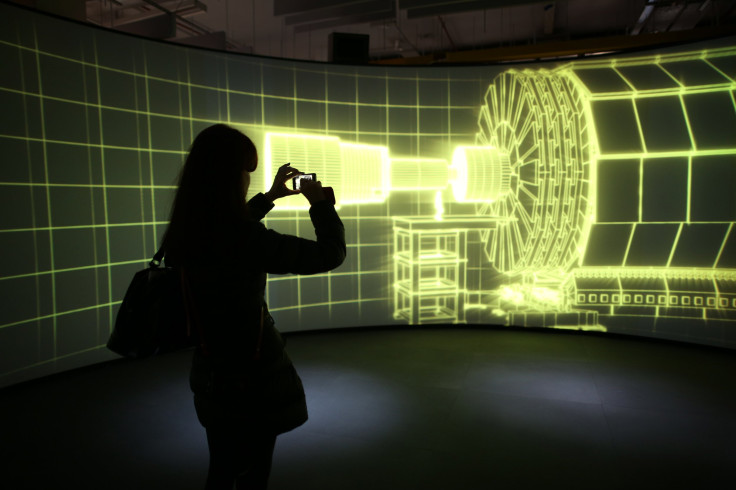CERN LHC Update: Scientists To Present New Data Gathered During Collider's Current Run

On June 3, the world’s most powerful particle collider -- located in a 17-mile-long tunnel 570 feet below the Franco-Swiss border -- recommenced operations. During its first run between 2010 and 2013, CERN’s Large Hadron Collider (LHC) collected data that eventually led to the much-publicized discovery of the “God particle” Higgs boson, and, more recently, the pentaquark -- an exotic new form of matter.
So, what do scientists hope to discover during LHC’s “Season 2,” when beams of proton have begun collisions at a record-breaking energy of 13 teraelectronvolts (TeV)?
“We hope to find light in the dark universe,” Rolf-Dieter Heuer, a German particle physicist and the director general of CERN since 2009, told the Wall Street Journal in an interview on Sunday -- a day before CERN briefs 700 scientists about the collider’s second run at a physics conference in Vienna.
In the “dark universe” we inhabit, visible matter constitutes a mere 16 percent of the total matter. The rest is made up of the “dark matter” -- an enigmatic substance that scientists hypothesize is made of Weakly Interacting Massive Particles (WIMPs) -- that does not interact with visible matter. During the LHC’s current run, scientists hope to discover these WIMPs.
“We know it’s [dark matter] there but have never been able to produce or detect it on earth,” CERN scientists said during an Ask Me Anything session on Reddit in May. “It is rather embarrassing that we only understand 4 percent of our universe at the moment.”

Up to one billion proton collisions would occur every second in the LHC’s four main detectors -- ALICE, ATLAS, CMS and LHCb -- during its second run. Each beam in the collider, travelling close to the speed of light, will carry up to 2,800 “proton bunches.” As CERN explains, the particles are so tiny that the task of making them collide is “akin to firing two needles 10 kilometers [6.2 miles] apart with such precision that they meet halfway.”
Higher the number of collisions, greater the chances of discovering new particles that either bolster the Standard Model of Physics -- which explains the interactions between fundamental particles and three of the four fundamental forces -- or provide clues to a new model that hints at the existence of “supersymmetry” -- which predicts the existence of more massive “super partners” for every known particle.
Physicists also hope that the LHC would help them unearth evidence of an overexploited trope in science fiction -- extra dimensions beyond the three spatial and one temporal dimension humans can perceive.
“These extra dimensions might exist at very small distances,” Ian Hinchliffe, a physicist at the U.S. Department of Energy’s Lawrence Berkeley National Laboratory and a CERN scientist, told the Journal. “But now, at higher and higher energies of the collider, I can probe shorter and shorter distance scales.”
Additionally, CERN would also present fresh data about the Higgs boson -- the elementary particle that gives mass to all other particles.
“We’ve done more precise measurements about the Higgs and have more information about its properties,” Heuer told the Journal.
© Copyright IBTimes 2024. All rights reserved.






















